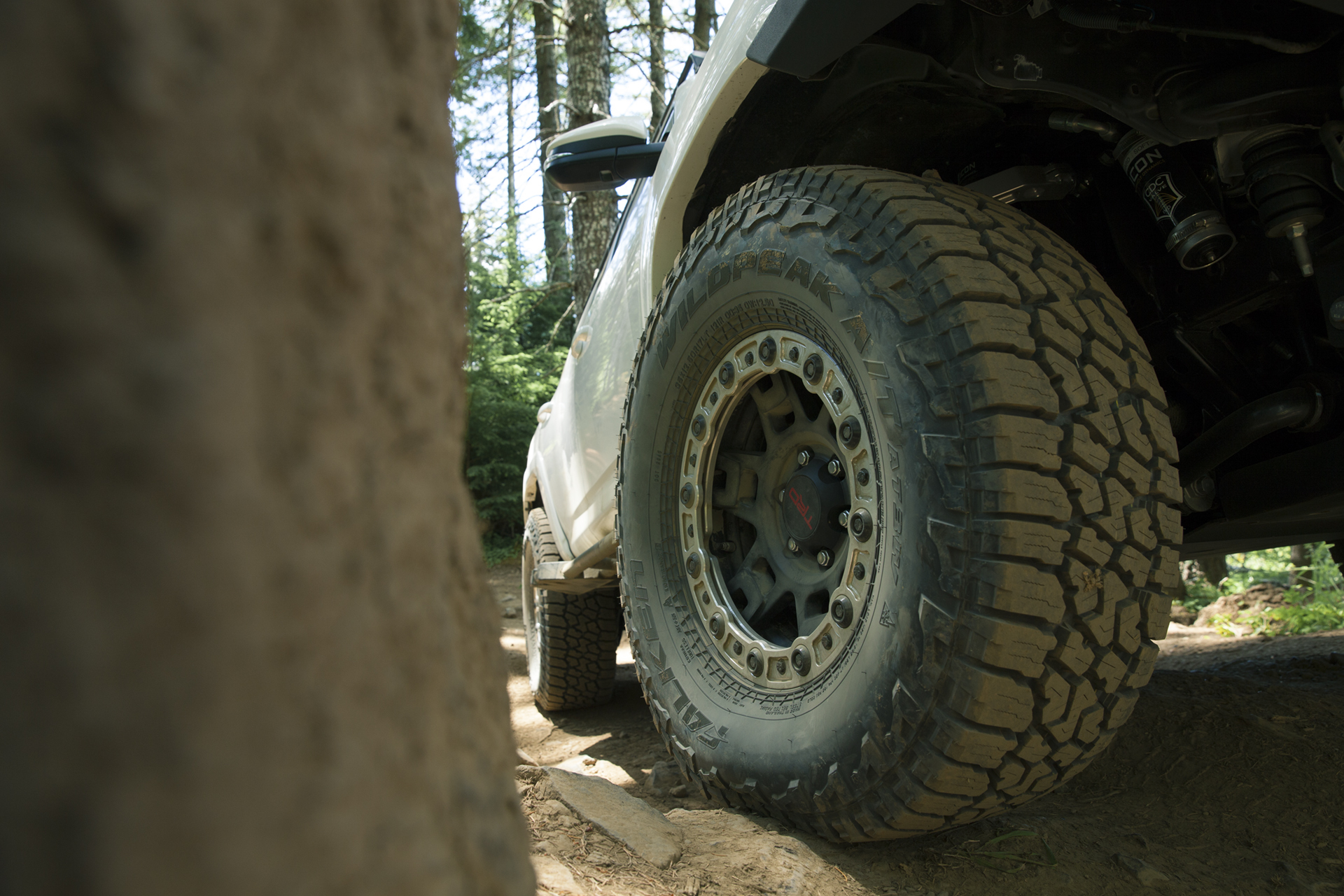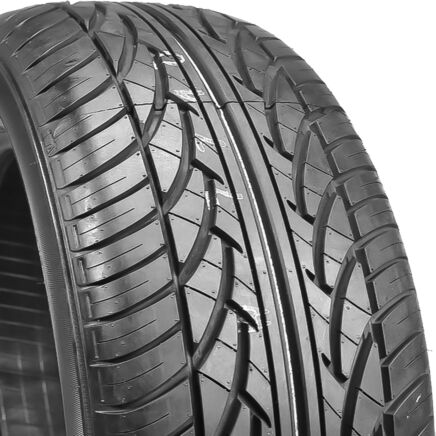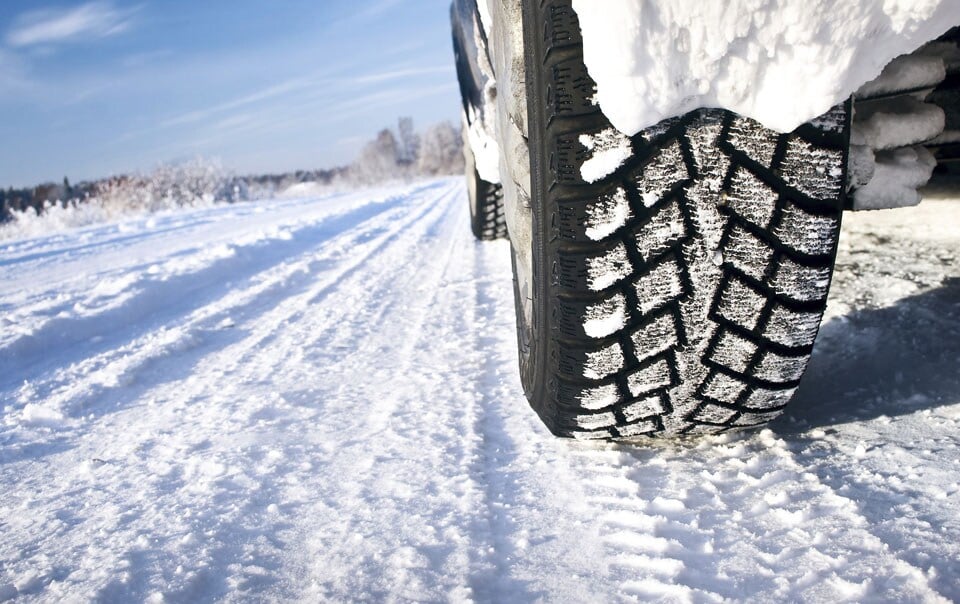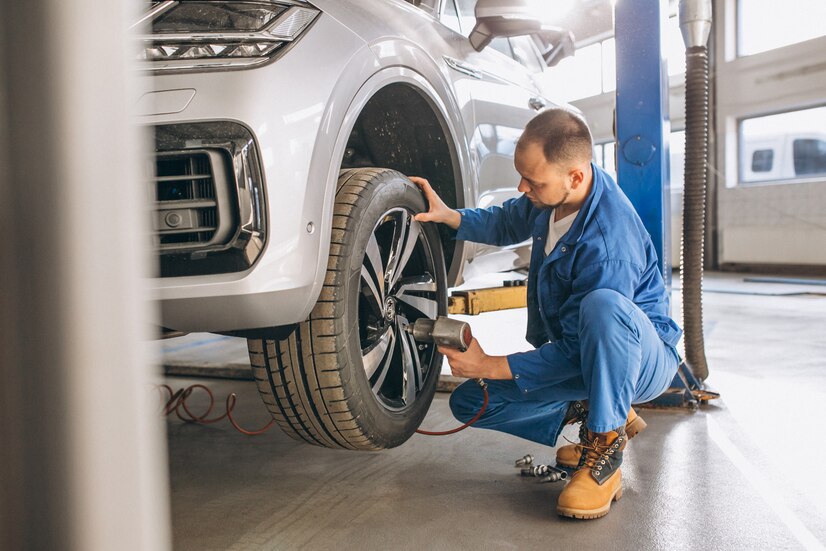Last Updated on July 27, 2025
Insights into Selecting the Best Touring Tires
The road under your wheels, whether winding through beautiful scenery or crowded metropolitan streets, is heavily determined by the tires you select for your vehicle. Tire selection is more than looks or price; it’s an important decision that affects your driving experience, safety, and vehicle performance. In this detailed guide, we will delve deeply into the world of touring tires to help you make informed decisions regarding this critical component of your vehicle.
Why Tire Selection Matters
Tire selection matters for several compelling reasons:
- Safety: Your tires are the only part of your vehicle that directly touches the road. The quality and condition of your tires play an essential role in maintaining control, traction, and braking capabilities. The right tires can be a lifesaver in harsh weather conditions or emergencies.
- Fuel Efficiency: The type of tire you choose can affect your vehicle’s fuel efficiency. Efficient touring tires can reduce rolling resistance, decrease fuel consumption, and lower carbon footprint.
- Comfort and Noise: Touring tires provide a comfortable and quiet ride. Choosing the right touring tire can improve your driving experience by lowering road noise and giving a smoother ride.
- Longevity: Buying high-quality touring tires will save you money in the long run. These tires are meant to last longer than other types, reducing the need for replacements.
- Handling and Performance: Touring tires are designed to provide good handling and performance qualities, ensuring stability and responsiveness in everyday driving conditions.
Overview of Touring Tires
Now that we understand why tire selection is crucial let’s delve into the world of touring tires.
- Types of Tires: Touring tires are classified as passenger tires. They are intended to give a comfortable and smooth ride in sedans, minivans, and crossover cars. There are two main types of touring tires:
- Grand Touring Tires: These tires are right for drivers who value comfort and reduced road noise. They have superb handling and a smooth ride, making them a popular option for long-distance travel.
- Performance Touring Tires: Performance touring tires are the best choice to mix comfort and sporty performance. They improve handling and responsiveness while providing a pleasant ride.
Advantages:
- Comfortable and quiet rides.
- Good traction and handling.
- Long tread life.
- Fuel-efficient.
Disadvantages:
- Not suitable for extreme off-road conditions.
- It may provide a different level of sporty performance than some other tire types.
Understanding the basics of touring tires sets the stage for more in-depth exploration into their construction, factors to consider, and how to choose the right ones for your vehicle and driving needs.
Understanding Touring Tires
Touring tires are a vital vehicle component that affects your daily driving comfort and safety. This article will discuss touring tires, their various types, unique features, advantages, and disadvantages. By the end of this detailed overview, you’ll understand what touring tires are and how they might benefit your driving experience.
Types of Tires
To better understand touring tires, you must know where they fit within the larger tire category. Tires are classified into several types, each designed to perform well in specific conditions or meet particular driving needs. Listed below are some common tire types:
- Touring Tires are the focus of our discussion. They are designed for passenger vehicles like sedans, minivans, and crossovers. They are perfect for long-distance and traveling trips because they prioritize comfort and a smooth ride.
- All-Season Tires: All-season tires are vast and designed to perform reasonably well in various weather conditions, including light snow and rain. They successfully combine performance and comfort.
- Summer Tires: Summer tires are designed for warm weather conditions. They provide excellent grip and handling on dry roads but are less suitable for cold or snowy environments.
- Winter tires are good for cold temperatures, ice, and snow. Their unique tread pattern and rubber compound ensure better traction in these conditions.
- Performance Tires: Performance tires are designed for sports cars and high-performance vehicles. They value handling, grip, and responsiveness over comfort.
- Off-Road Tires: Off-road tires are built for rough terrain and provide excellent traction on dirt, mud, and rocky places. They are commonly used on trucks and SUVs for off-roading trips.
What Sets Touring Tires Apart
Touring tires stand out in the tire market due to their specific design and characteristics:
- Comfort-Oriented: Touring tires are designed to provide a comfortable and smooth ride. They use a softer rubber compound and a more flexible sidewall, which helps withhold road roughness and reduce vibration and noise.
- Low Noise: One of the primary differentiating characteristics of touring tires is their low road noise. The tread pattern reduces noise levels, resulting in a calmer driving experience.
- Excellent Traction: Touring tires offer good traction on dry and wet roads. They often have siping (minor grooves) in the tread pattern to improve grip, making them a trusted choice for various weather conditions.
- Long Tread Life: These tires usually have a longer tread life than other tire types. The rubber compound is made to be durable, which means it can last for tens of thousands of miles.
Advantages and Disadvantages
Understanding the advantages and disadvantages of touring tires can help you make a better decision when choosing tires for your vehicle:
Advantages:
- Comfortable Ride: Touring tires provide a smooth and comfortable ride, making your daily movement or long road trips more enjoyable.
- Low Noise: Reduced road noise adds to a quieter drive, which makes the total driving experience better.
- Traction: Good traction in all weather conditions ensures good performance, even in light rain or wet roads.
- Longevity: Touring tires usually last longer than other tire types, saving you money in the long run.
Disadvantages:
- Not Suitable for Extreme Conditions: Touring tires are not designed for off-road trips or harsh weather conditions, so they may not perform well in deep snow or rough terrain.
- Limited Sporty Performance: While touring tires provide a pleasant ride, they may not have the exact flexible handling and responsiveness as performance tires.
Understanding these critical aspects of touring tires is essential for making an informed choice based on your driving needs and preferences. Whether you prioritize comfort, low noise, or longevity, touring tires are reliable for everyday driving.
Touring Tire Construction
Touring tires are well-known for offering drivers comfort, low noise, and dependable performance during long-distance trips. Understanding the structure of touring tires, including tread patterns and designs, tire size and fitment, load rating, and speed rating, is essential when choosing the right tires for your vehicle.
Tread Patterns and Designs
Tread patterns are an essential aspect of touring tire construction. They determine the tire’s grip, handling, and performance in various road conditions. Touring tires are usually known for their unique tread patterns, which are designed to provide a comfortable and safe driving experience. Here’s what you need to know:
- Symmetric Tread Patterns: Many touring tires have symmetric tread patterns, replicating the pattern on both sides of the tire. These patterns are renowned for their quiet, comfortable rides and reliable performance.
- Asymmetric Tread Patterns: Touring tires frequently have asymmetric tread patterns. The outside and inner sides of the tire are decorated differently. This design maintains adequate traction and water evacuation while providing better handling, particularly while cornering.
- Directional Tread Patterns: Directed tread patterns are frequently seen on high-performance touring tires. Their unique directional design maximizes water dispersion and improves traction on wet roads.
- The minor cuts or grooves in the tire’s tread blocks are called siping. Sipes increase traction and grip on slick surfaces, especially in rain or light snow.
- Tread Depth: The depth of the tire’s tread grooves also affects its performance. A deeper tread can improve traction on wet or slippery surfaces, but it may also result in slightly more road noise.
- Tread Wear Indicators: Touring tires often have tread wear indicators molded into the grooves. These indicators help you monitor the condition of your tires and determine when it’s time for replacement.
Tire Size and Fitment
Selecting the correct tire size and fitment is essential for safety, performance, and maintaining your vehicle’s handling characteristics. Here’s what you should consider:
- Size: Your tire’s size is specified using a combination of numbers and letters, such as “225/55R17.” These numbers show the tire’s width (225 millimeters), aspect ratio (55%), and the diameter of the wheel it fits (17 inches). Ensure you choose the correct size recommended for your vehicle in` the owner’s manual or the driver’s side door jamb.
- Load Index: The load index indicates the maximum weight that a tire can securely support. It is located on the tire’s sidewall and is essential to choose tires with a load index that meets or exceeds your car’s specifications.
- Speed Rating: The highest speed at which a tire can be used safely is indicated by its speed rating. It is represented by a letter, like “H” or “V.” Make sure the tires you select have a speed rating that fits your car and driving style.
- Fitting: It’s crucial to consider the fitting specifications when changing your car’s tires. These include whether your vehicle needs uneven or directed tires and whether the tires should be mounted with the inside or outside facing out.
Load Rating and Speed Rating
Load rating and speed rating are essential aspects of touring tire construction; they provide information about a tire’s capacity and performance limits:
- Load Rating: Load rating is shown by a number on the tire’s sidewall (e.g., 91 for a load rating of 1,356 pounds per tire). It shows the maximum weight a single tire can support. Ensure that the load rating of your tires meets or exceeds your vehicle’s gross axle weight rating (GAWR) to maintain safety and prevent tire damage.
- Speed Rating: Speed rating is represented by a letter (e.g., H for a speed rating of 130 mph). It indicates the speed at which the tire can operate safely and effectively. Select a speed rating for your vehicle and driving habits to ensure safe handling at high speeds.
Factors to Consider
Many important factors should influence your decision when selecting the right touring tires for your vehicle. These factors should align with your specific driving needs, the weather conditions you encounter, your budget, and the longevity of the tires. Let’s explore each of these factors in detail.
Driving Conditions
This section focuses on matching your tire choice with specific driving conditions. Whether driving in the city, cruising on the highway, or enjoying off-road adventures, the right tire can impact your vehicle’s performance and safety.
- City Commuting: Touring tires are a great choice if your daily driving involves city streets and highways. They offer a comfortable ride and low road noise, making everyday driving more enjoyable.
- Highway Travel: For those who usually go on long highway journeys, touring tires are great at providing a smooth and stable ride. They offer fantastic highway stability and responsiveness, enhancing your driving experience.
- Mixed Driving: If your driving includes a mix of city, highway, and rural routes, touring tires balance comfort and performance, making them the right choice.
- Occasional Light Off-Roading: Although touring tires are not intended for off-roading, they can endure a few trips on maintained dirt roads. Touring tires will work fine if you occasionally drive on rough surfaces.
Weather Considerations
Weather plays a vital role in tire performance. This section examines how weather conditions, such as rain, snow, or extreme heat, affect your tire selection. We’ll guide you in making choices that suit your weather, from all-season tires to winter and summer options.
- Dry and Warm Climates: Touring tires perform the best in dry and warm conditions. Their design and tread patterns have proper grip and handling on dry roads, which provides a pleasant driving experience.
- Rainy Conditions: Touring tires also handle wet roads very well. The tread patterns and siping help remove water from the tire’s contact patch, reducing the risk of hydroplaning and maintaining traction in rainy weather.
- Light Snow: While touring tires are not winter tires, some types of touring tires have improved performance in soft snow due to their all-season capabilities. Traveling tires with a good snow rating can be the best if you live in an area with few light snowfalls.
- Severe Winter Conditions: If you usually encounter heavy snow and ice, it’s best to switch to winter tires during the winter months. Touring tires are not designed for extreme cold and snowy conditions.
Budget and Longevity
Balancing your budget with tire longevity is another essential part of intelligent tire shopping. In this part, we’ll discuss finding tires that fit your financial constraints and provide the durability and longevity you need for a cost-effective and safe driving experience.
- Budget: Your budget plays a significant role in tire selection. Touring tires are available in a wide price range, with premium brands offering improved features and longer tread life. Determine your budget and check out the options within that range.
- Longevity: Touring tires are known for their longevity. They often have a longer tread life than other tire types, so you’ll replace them less frequently. When checking the longevity of touring tires, consider the expected gas usage and warranty.
- Cost vs. Value: While budget is important, balancing cost and value is essential. Spending more on high-quality touring tires can result in excellent performance, safety, and longevity, eventually providing greater value over time.
- Warranty: Check the warranty offered by the tire manufacturer. Many touring tires come with warranties that cover specific usage or periods, providing peace of mind regarding their longevity.
Popular Touring Tire Brands
When selecting touring tires for your vehicle, you’ll find many reputable tire manufacturers offering many touring tires. To help you make a better choice, let’s delve into popular touring tire brands, compare their key features, and explain the top picks within each brand.
Brand Comparison
In this section, we’ll provide a fair comparison of the touring tire companies mentioned. We’ll look at factors including tire models, technologies, cost, and customer satisfaction to give you a complete view of how these brands compare. Whether you’re looking for high-end or low-cost tires, our brand comparison will help you make an informed choice.
- Michelin: Michelin is a well-respected name in the tire industry, known for its commitment to quality and innovation. Their touring tires often feature advanced technologies like EverGrip, which enhances traction as the tire wears, and Comfort Control Technology for a quieter ride.
- Bridgestone: Bridgestone is another renowned tire manufacturer offering a wide range of touring tires. Their Ecopia series is known for its fuel efficiency, while the Turanza line emphasizes comfort and performance.
- Goodyear: Goodyear touring tires are favored for their reliability and all-season capabilities. Many Goodyear models feature SmartTRED and HydroTRED for enhanced grip and wet traction.
- Continental: Continental is a European brand known for its premium touring tires. Their products often focus on delivering a smooth and comfortable ride with excellent wet and dry performance.
- Pirelli: Pirelli primarily manufactures high-performance tires but also offers touring tire options. Its Cinturato line is famous for its comfort, low rolling resistance, and good all-season performance.
- Firestone: A subsidiary of Bridgestone, Firestone provides a range of touring tires suitable for different vehicles. Their Precision Touring line offers a balance of comfort and affordability.
- Yokohama: Yokohama’s AVID series is known for its touring tire offerings. These tires are designed for extended tread life, fuel efficiency, and a comfortable ride.
Best Touring Tires
While the best touring tire for your vehicle ultimately depends on your specific needs and preferences, here are some top picks from popular touring tire brands:
- Michelin Defender T+H: The Defender T+H is well-known for its long tread life, all-season performance, and superior traction. It’s an excellent choice for individuals who want a comfy and dependable touring tire.
- The Bridgestone Turanza QuietTrack provides a quiet and pleasant ride, making it suitable for commuters and road trippers. It also offers good wet and dry traction.
- Goodyear Assurance ComfortDrive is designed to provide a smooth and pleasant ride with great handling and steering response. It’s an excellent alternative for people who value comfort.
- Continental PureContact LS: The Continental PureContact LS is known for its luxury touring performance. It delivers a quiet ride, precise handling, and good traction in various conditions.

- Pirelli Cinturato P7 All Season Plus: Pirelli’s Cinturato P7 All Season Plus offers an all-around package focusing on comfort, low rolling resistance, and all-season capabilities. It’s a popular choice for sedans and crossovers.
- The Firestone Precision Touring: The Firestone Precision Touring provides a budget-friendly option without changing performance. It offers a comfortable ride and good tread life for the price.
- Yokohama AVID Ascend GT: Yokohama’s AVID Ascend GT is known for its long-lasting tread and all-season performance. It’s a durable and reliable choice for those seeking value and longevity.
Tire Maintenance and Care
Tires are an essential component of your vehicle, and proper maintenance and care are necessary to ensure they perform optimally, last longer, and keep you safe on the road. This guide will explore the essential parts of tire maintenance and care, including tire inflation, rotation, balancing, inspection, and repairs.
Tire Inflation
Proper tire inflation is one of the most essential parts of tire maintenance. Under-inflated or over-inflated tires can affect your vehicle’s handling, fuel efficiency, and safety. Here’s what you need to know:
- Recommended Pressure: Always follow the manufacturer’s recommended tire pressure in your vehicle’s owner’s manual or a placard on the driver’s side door jamb. This pressure is specific to your vehicle’s make and model.
- Check Regularly: It’s essential to check your tire pressure regularly, at least once a month and before long trips. Use a reliable tire pressure gauge to measure the pressure when the tires are cold (not after driving).
- Correcting Pressure: If the pressure is too low, add air until it reaches the recommended level. If it’s too high, release some air to bring it down to the correct pressure. Avoid over-inflating the tires, leading to a harsh ride and reduced traction.
- Spare Tire: Remember to check the spare tire’s pressure as well. It’s often overlooked but is essential in case of an emergency.
Rotation and Balancing
Tire rotation and balancing help ensure even wear on your tires and improve overall handling and performance. Here’s what you should know:
- Rotation Pattern: Tires wear differently depending on their position on the vehicle. Regularly rotating your tires helps ensure even wear. Common rotation patterns include front-to-back, rearward cross, and X-pattern rotations.
- Frequency: Generally, consider rotating your tires every 6,000 to 8,000 miles. However, check your vehicle’s owner’s manual for the manufacturer’s recommendations.
- Balancing: Wheel balancing removes vibrations and ensures a smooth ride. Balancing involves adding small weights to the wheel rim to counterbalance weight variations.
- Alignment: While not part of tire rotation and balancing, checking your wheel alignment periodically is essential, especially if you notice uneven tire wear or your vehicle pulling to one side. Improper alignment can cause untimely tire wear.
Inspection and Repairs
Regular inspections and prompt tire repairs are essential for safety and tire longevity:
- Visual Inspection: Regularly inspect your tires for visible damage, such as cuts, punctures, bulges, or sidewall cracks. If you notice any of these issues, have the tire inspected by a professional.
- Tread Depth: Check the tire tread depth using a tread depth gauge or the penny test. Adequate tread depth is needed for proper traction, especially in wet or slippery conditions. Replace tires when the tread depth reaches the wear indicators or is less than 2/32 of an inch.
- Valve Stems and Caps: Ensure valve stems are in good condition and valve caps are securely in place. Properly functioning valve components help maintain tire pressure.
- Punctures and Repairs: It may be repairable if you have a puncture in the tread area and it’s not too large or close to the sidewall. Repairs should be performed by a trained technician following industry standards.
- Professional Inspection: If you’re not sure of the condition of your tires or suspect a problem, have them inspected by an experienced tire technician. They can assess tire health, tread wear patterns, and overall safety.
Warranty Information
Understanding the warranty associated with your touring tires is crucial for peace of mind and potential cost savings. Here’s what to consider:
- Mileage Warranty: Many touring tires have a usage warranty guaranteeing the tire’s tread life up to a specified number of miles. Be sure to check the warranty and understand its terms.
- Road Hazard Protection: Some tire manufacturers provide road danger protection, which protects against tire damage caused by potholes, nails, and other debris. Check the terms of this protection if it is included.
- Quality and Material Warranty: This warranty covers tire construction and materials issues. It’s essential to understand its duration and terms.
- Proper Maintenance: Remember that warranties often require you to properly maintain and care for your tires. This includes keeping the recommended tire pressure, rotating the tires regularly, and ensuring proper wheel alignment.
- Registration: Some warranties may require registering your tires with the manufacturer to activate the coverage. Be sure to follow any registration instructions for your tires.
Installation and Replacement
Installing and replacing touring tires is a crucial aspect of tire maintenance that can impact your vehicle’s safety and performance. This guide will explore the installation options, discuss when to replace your touring tires, and provide valuable installation tips.
DIY vs. Professional Installation
DIY or professional tire installation influences your vehicle’s performance and safety. In this discussion, we’ll explore the benefits and disadvantages of both options, helping you make an informed choice based on your skills, equipment, and style.
DIY Installation:
- DIY installation can be cost-effective if you have the necessary tools and experience.
- If you install tires yourself, follow the manufacturer’s guidelines and ensure proper torque settings for wheel nuts or bolts.
- For DIY installation, you need a jack, jack stands, a lug wrench, and a torque wrench.
- While DIY can save money, it may only suit those with prior experience or the necessary equipment.
Professional Installation:
- A tire shop or repair center providing professional installation has various benefits, such as skilled personnel and specialized equipment.
- Professionals minimize the possibility of vibration or uneven wear by ensuring tires are mounted, balanced, and installed correctly.
- Additional services, including tire rotation, alignment inspections, and disposal and recycling, are frequently provided by tire businesses.
When to Replace Your Touring Tires
Knowing when to replace your touring tires is essential for safety and performance:
- Tread Depth: Replace your tires when the tread depth reaches 2/32 of an inch or the tread wear signs become apparent. In rainy weather, poor tread depth can impair traction and increase the risk of hydroplaning.
- Uneven Wear: If you detect uneven tread wear, it could indicate an alignment or suspension issue. In such cases, replacing and addressing the current problem is advisable.
- Crack in such instances and Damage: Visible sidewall cracks, cuts, or punctures in the tire might harm its structural integrity. Replace tires that have sustained severe damage, as they may be harmful.
- Age: Even if the tread looks good, touring tires should be replaced after six years, as the rubber can lose its value over time. Check the sidewall for the tire’s manufacture date (DOT code) to determine its age.
- Loss of Performance: If you notice a reduction in your tires’ performance, such as reduced handling, increased road noise, or decreased fuel efficiency, it may be time for a replacement.
Installation Tips
When installing touring tires, consider these tips to ensure a successful and safe installation:
- Match Tire Type: Ensure that the new touring tires match the size and specifications recommended for your vehicle. For guidance, consult your owner’s manual or the tire placard on your car.
- Balance Tires: Balancing is crucial to prevent vibrations and ensure a smooth ride. Always have your new tires balanced during installation.
- Proper Torque: When tightening lug nuts or bolts, use a torque wrench to achieve the manufacturer’s recommended torque settings. This prevents over-tightening, which can damage the tires or cause them to wear unevenly.
- Valve Stems and TPMS: Check that the valve stems are in good condition and equipped with valve caps. If your vehicle has a Tire Pressure Monitoring System (TPMS), ensure it’s working correctly after installation.
- Alignment Check: Consider getting a wheel alignment check after installing new tires, especially if you’ve experienced uneven wear or alignment issues.
- Maintain Proper Inflation: Check and maintain the correct tire pressure as recommended in your vehicle’s manual after installation. Proper inflation is essential for safety, tire longevity, and performance.
- Dispose of Old Tires Properly: If replacing old tires, ask the installer questions about proper tire disposal and recycling options. Many tire shops offer these services.
Conclusion & Recommendations
In this comprehensive guide to touring tires, we’ve explored every part of these essential components of your vehicle. We’ve covered everything from understanding the different types of touring tires to considering factors like driving conditions and weather, from choosing the right brand to maintaining and installing your tires. Now, it’s time to recap the key points and allow you to make an informed decision regarding your touring tires.
Recap of Key Points
- Understanding Touring Tires: Touring tires are designed for comfortable, quiet rides and are suitable for everyday movement and long-distance travel.
- Types of Tires: Consider the different types of tires, including touring, all-season, summer, winter, performance, and off-road, to match your driving needs.
- What Sets Touring Tires Apart: Compared to other tire types, touring tires provide comfort, low noise, good traction, and long life.
- Advantages and Disadvantages: Touring tires offer a comfortable ride and low noise but may not perform well in extreme conditions or deliver sporty handling.
- Touring Tire Construction: Learn about tread patterns, tire size, fitment, load rating, and speed rating to understand how touring tires are built.
- Factors to Consider: When selecting touring tires for your vehicle, consider driving conditions, weather, budget, and longevity.
- Popular Touring Tire Brands: For top-quality touring tires, explore Michelin, Bridgestone, Goodyear, Continental, Pirelli, Firestone, and Yokohama.
- Buying Guide: Understand where to buy, tips for bargains, and warranty information to make an informed tire purchase.
- Installation and Replacement: Decide between DIY and professional installation, know when to replace your touring tires, and follow installation tips for safety and performance.
Making Your Informed Decision
Now that you’ve comprehensively understood touring tires and all the factors surrounding them, it’s time to make your informed decision. Whether looking for a comfortable daily driver or the perfect tires for your road trips, you have the knowledge and tools to select the right touring tires that match your specific driving needs and preferences.
Ready to Buy Tires?
If you’re ready to purchase your touring tires, look no further than Tires Easy, your one-stop online destination for high-quality tires. At Tires Easy, you’ll find a lot of touring tires from reputable brands, ensuring you have access to the best options for your vehicle. With competitive prices, convenient online shopping, and expert customer support, Tires Easy makes buying tires easy.
Make the Smart Choice
Select the right touring tires for your vehicle and safety. With the knowledge and insights from this guide, you can confidently navigate the world of touring tires, find the perfect set for your car, and enjoy a comfortable and safe driving experience for miles to come. Make your informed decision today, and hit the road with confidence.
FAQs
Are touring tires worth it?
You should consider touring tires if you like a comfortable and quiet ride during everyday driving and long-distance travel. They provide a smooth driving experience and low road noise, making them a valuable choice for those seeking comfort and dependability.
What are touring tires?
Touring tires, often called “tour tires,” are designed for passenger vehicles. They are known for their focus on ride comfort, low noise levels, good traction in various conditions, and longevity.
What are the disadvantages of touring tires?
While touring tires have many advantages, they might not work well in harsh situations like deep snow or fast-paced racing. Their focus on lifespan and comfort may sometimes decrease handling and responsiveness.
What makes a tire a touring tire?
Touring tires are known for their unique tread patterns, designed for a comfortable and quiet ride. They often have all-season capabilities, good wet and dry traction, and a long-life focus. These traits make them suitable for everyday movement and long highway trips.
What type of tire is best for highway driving?
Touring tires are great for highway driving because they focus on comfort, low noise, and dependable performance. They provide a smooth ride, good traction, and high usage, enhancing the highway driving experience.
What is the difference between a grand and standard touring tire?
Grand touring tires differ slightly from standard tires, offering even more comfort, refinement, and often enhanced handling characteristics. They are designed for luxury and performance-oriented vehicles, providing a balance of comfort and sportiness.
What is the difference between touring and high-performance tires?
Touring tires are the best choice for daily driving since they prioritize comfort, longevity, and low noise levels. On the other hand, high-performance tires may compromise some ride comfort but are designed for improved handling, speed, and turning, making them appropriate for sports cars and dangerous driving.
-
Automotive Specialist
-
Proofreader
-
Writer















